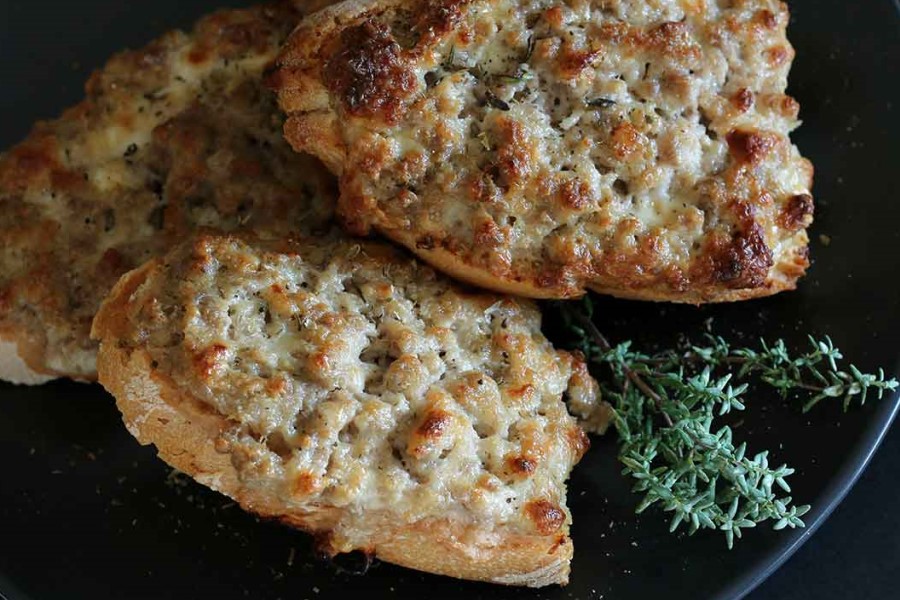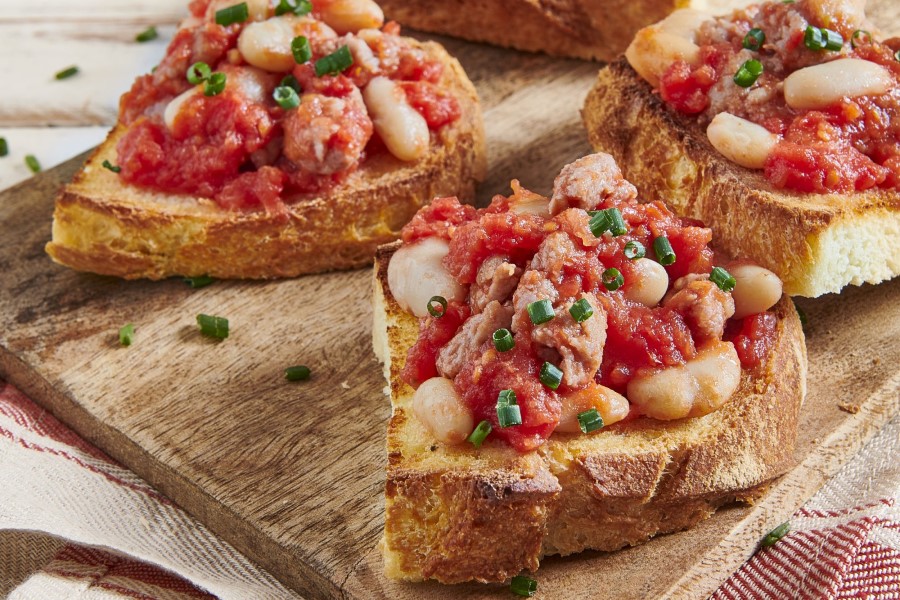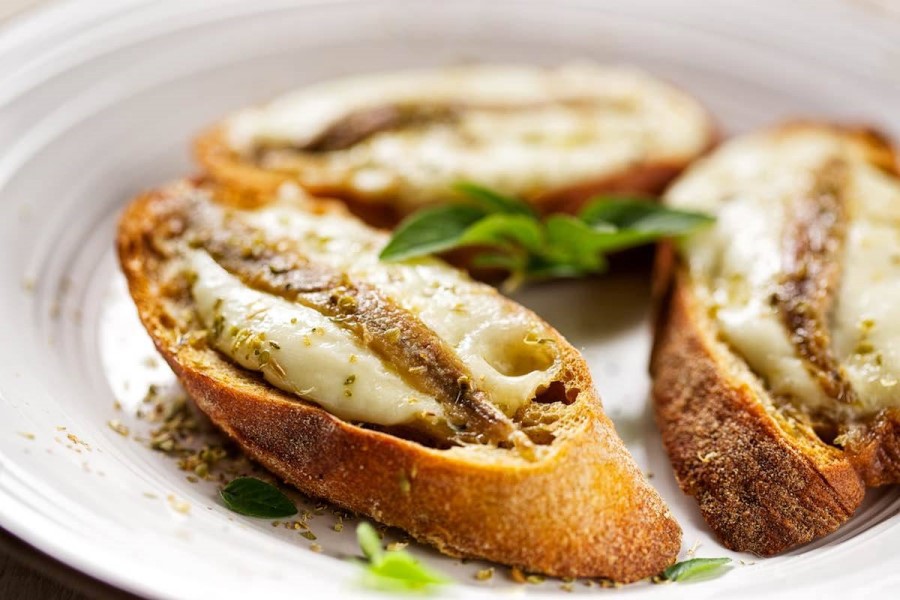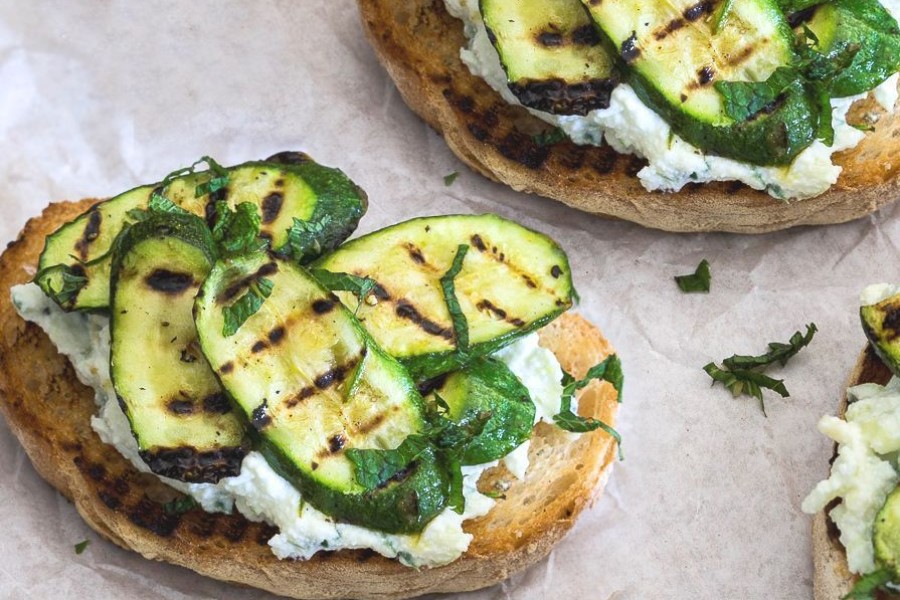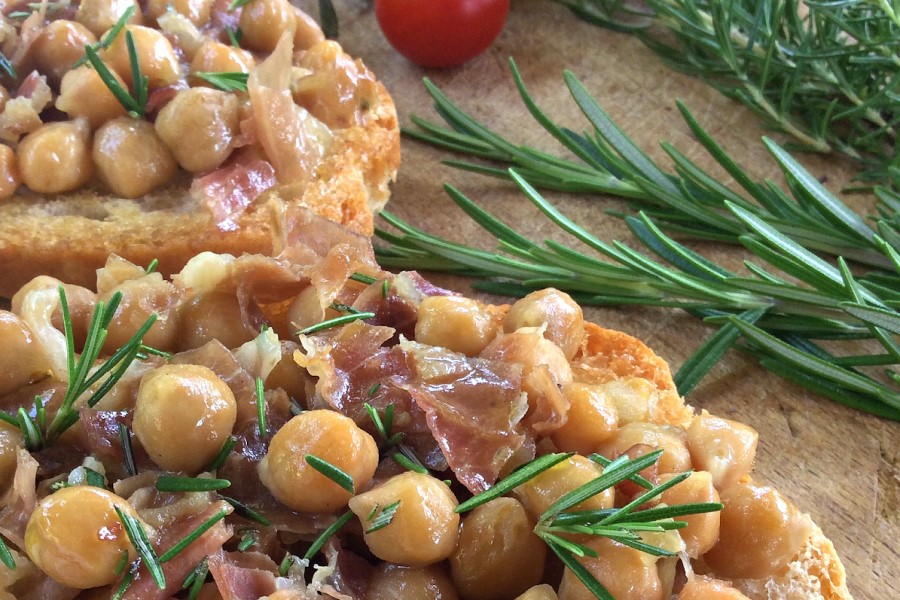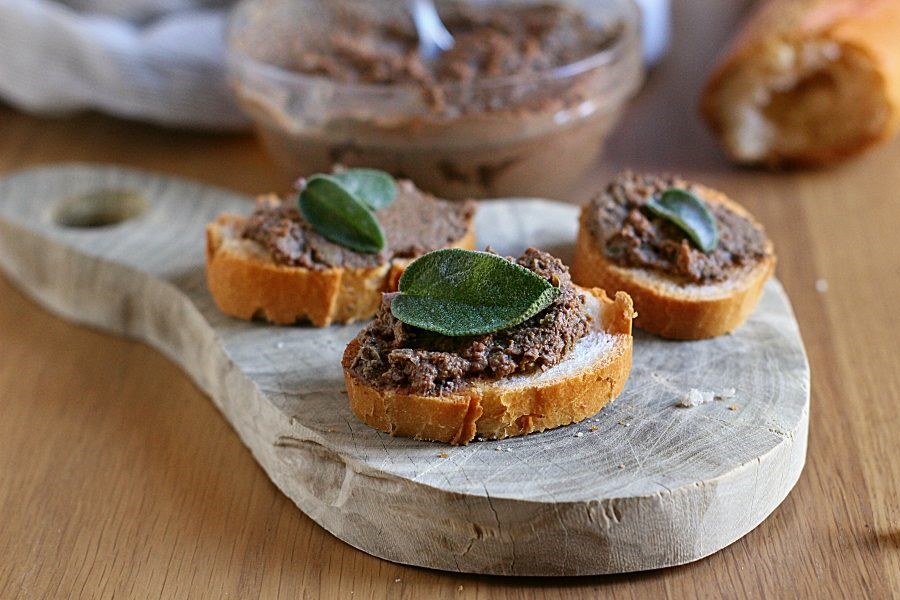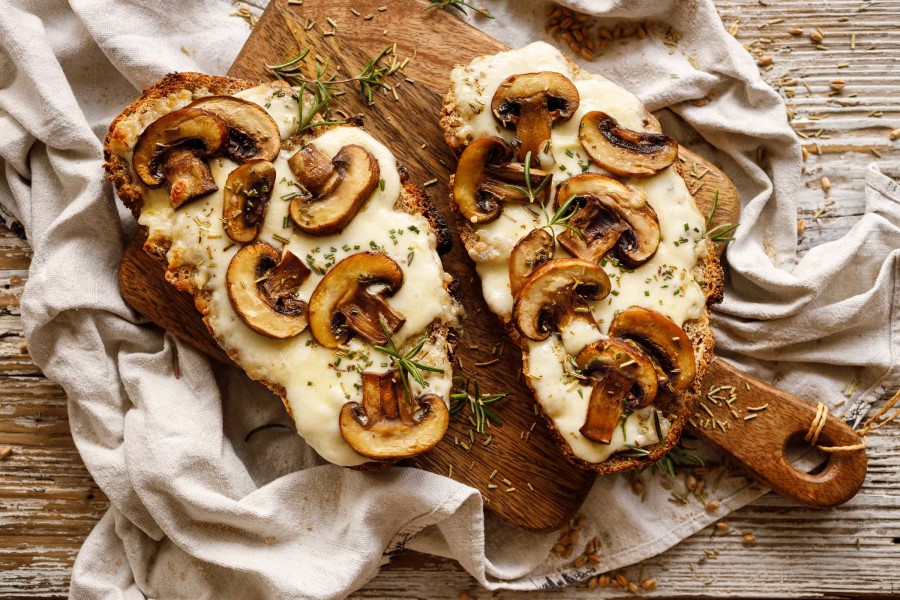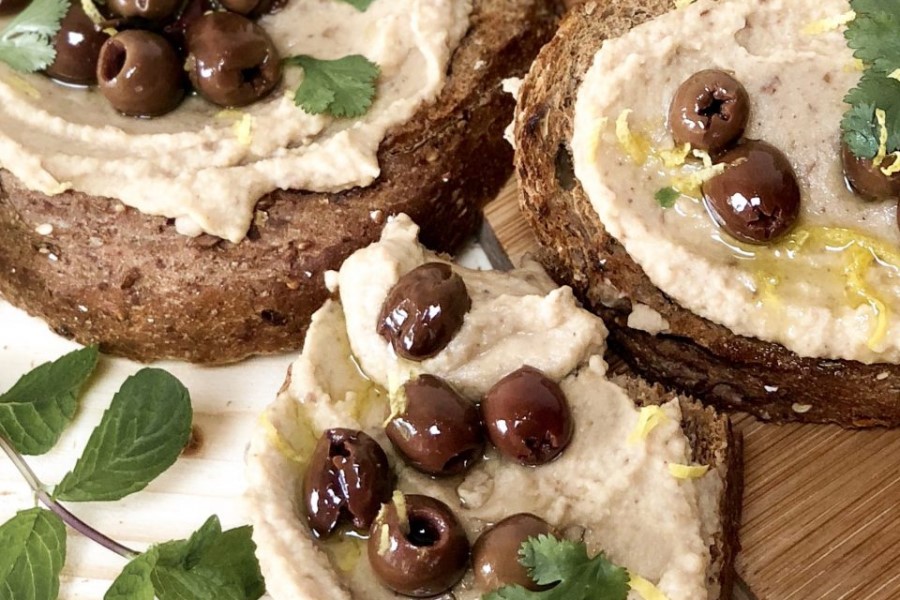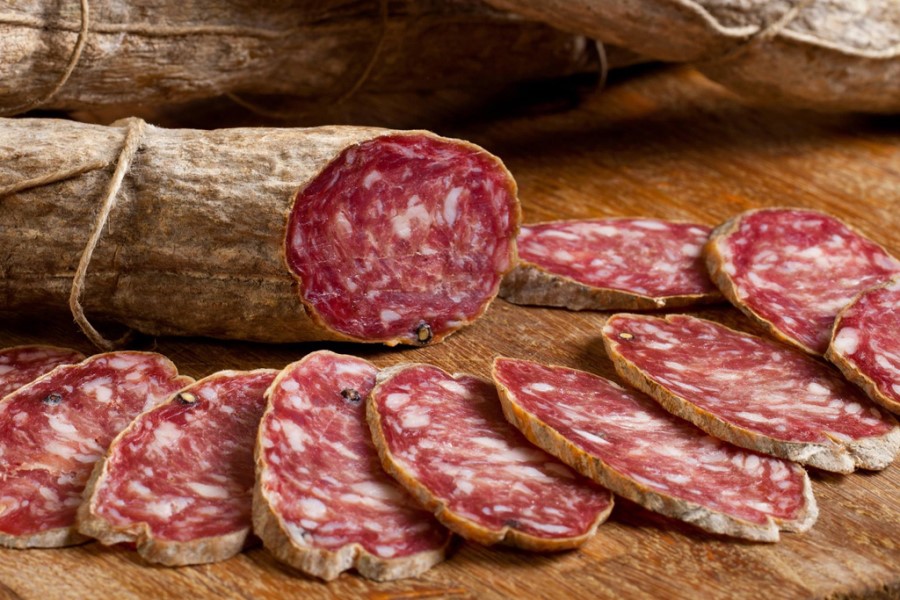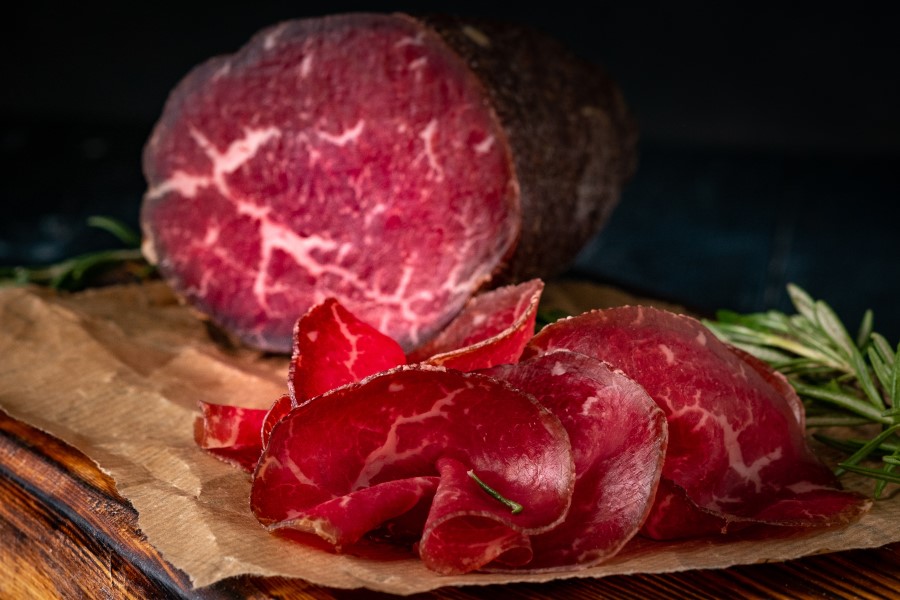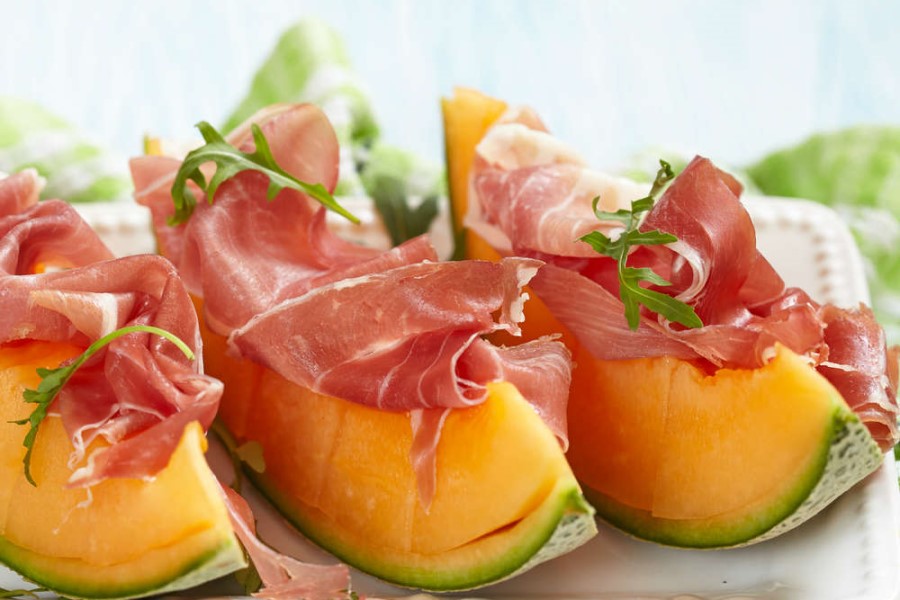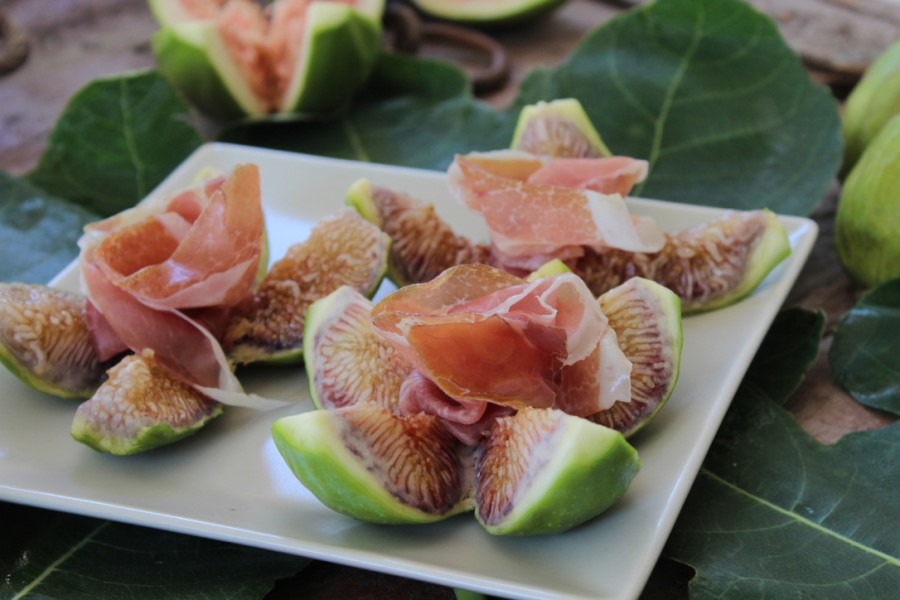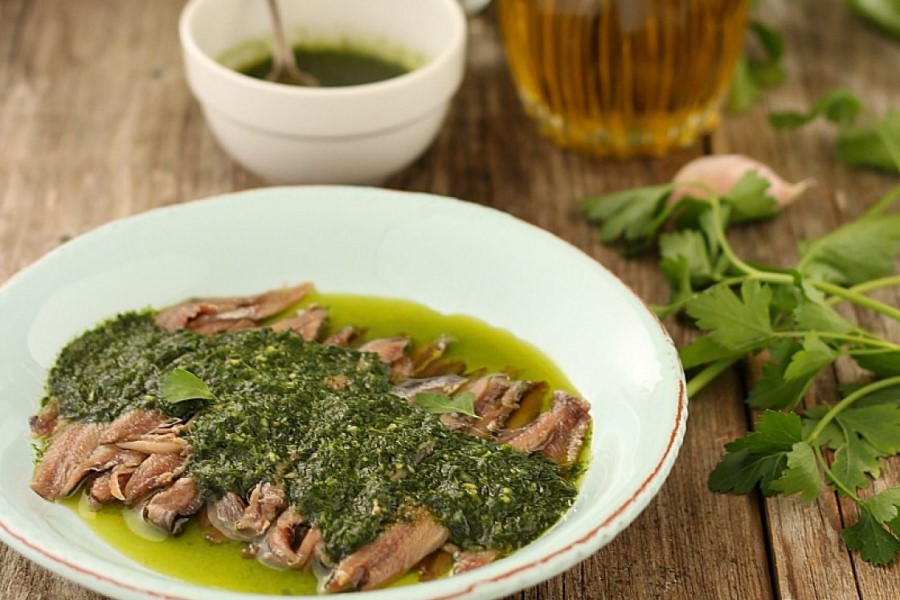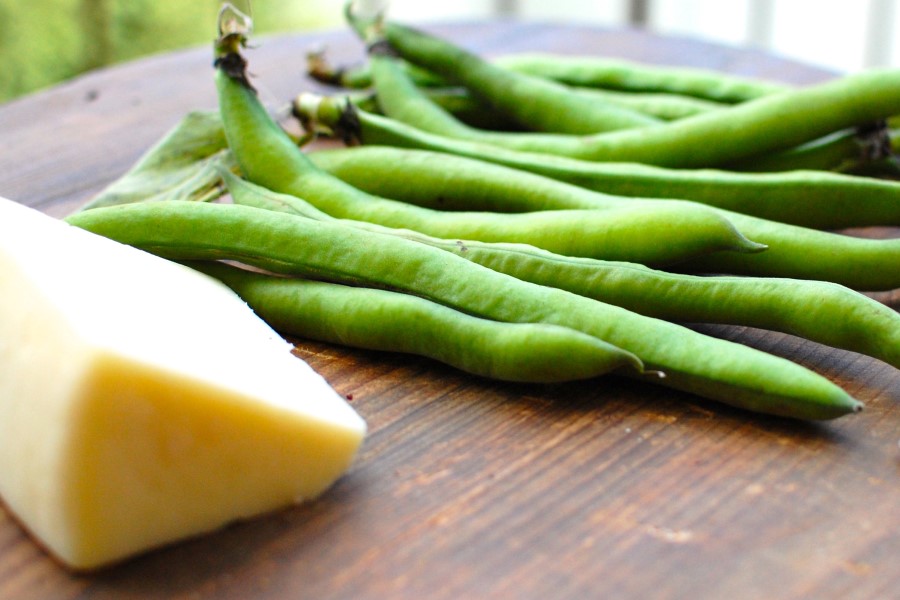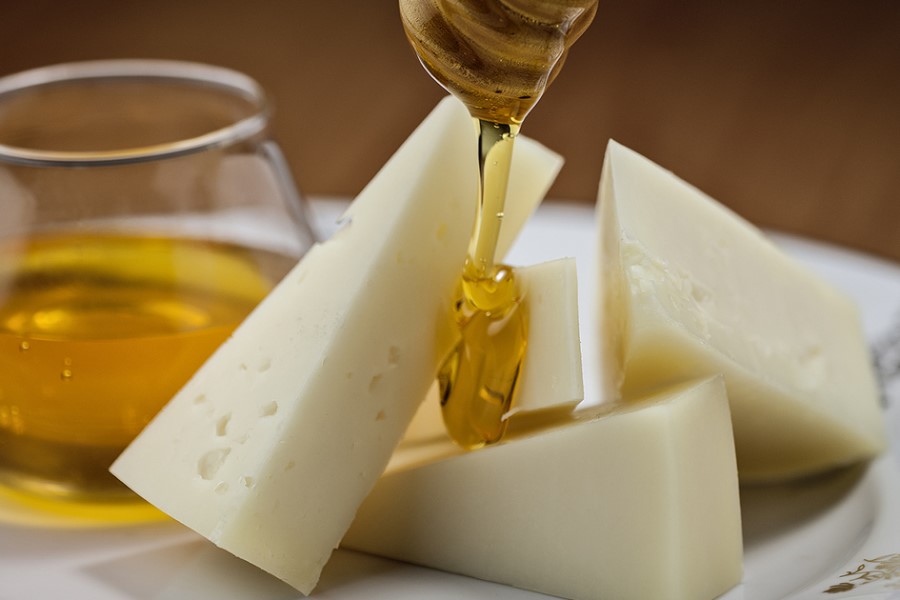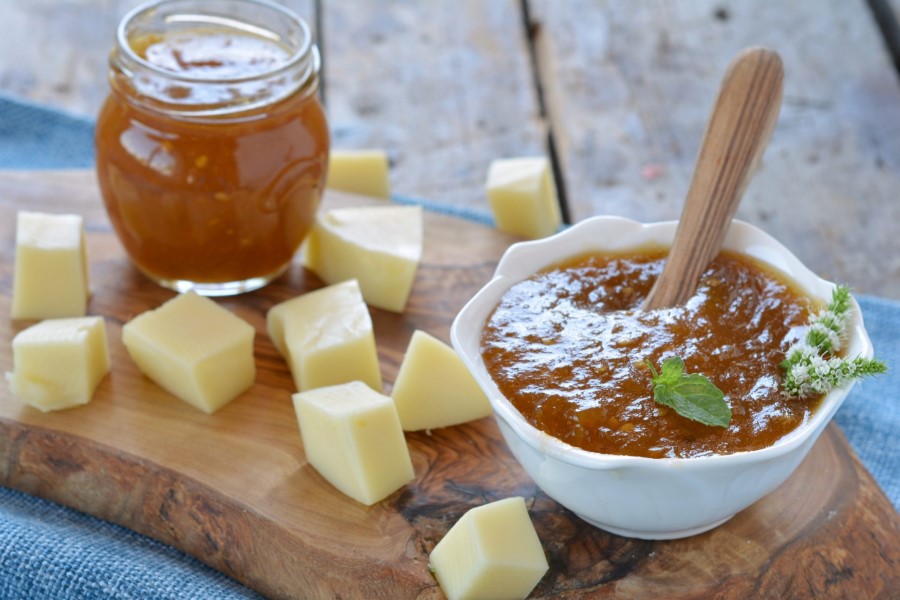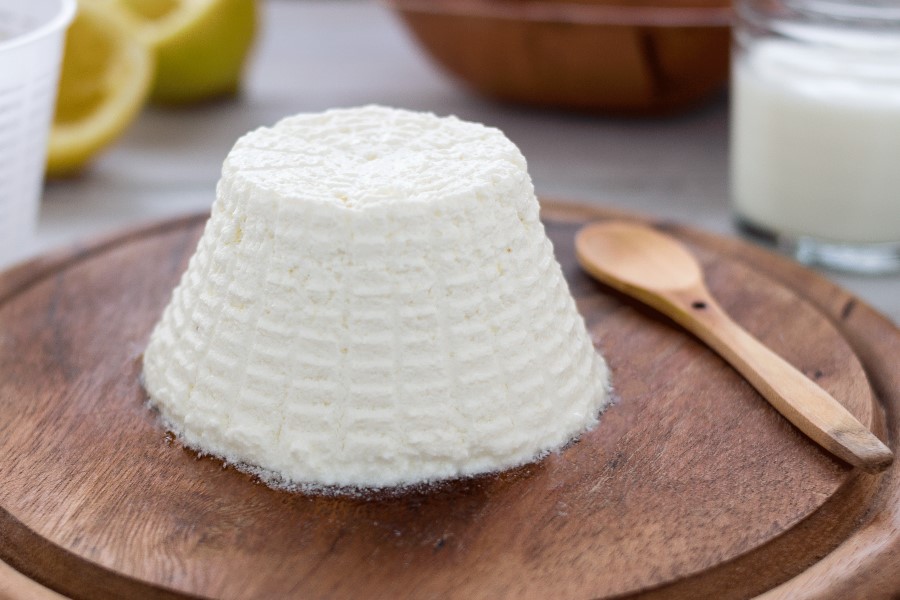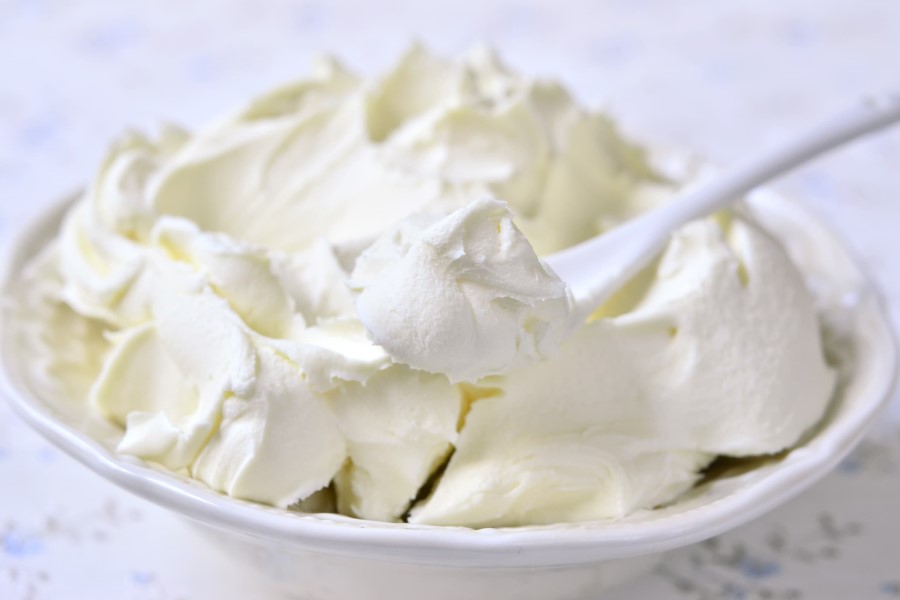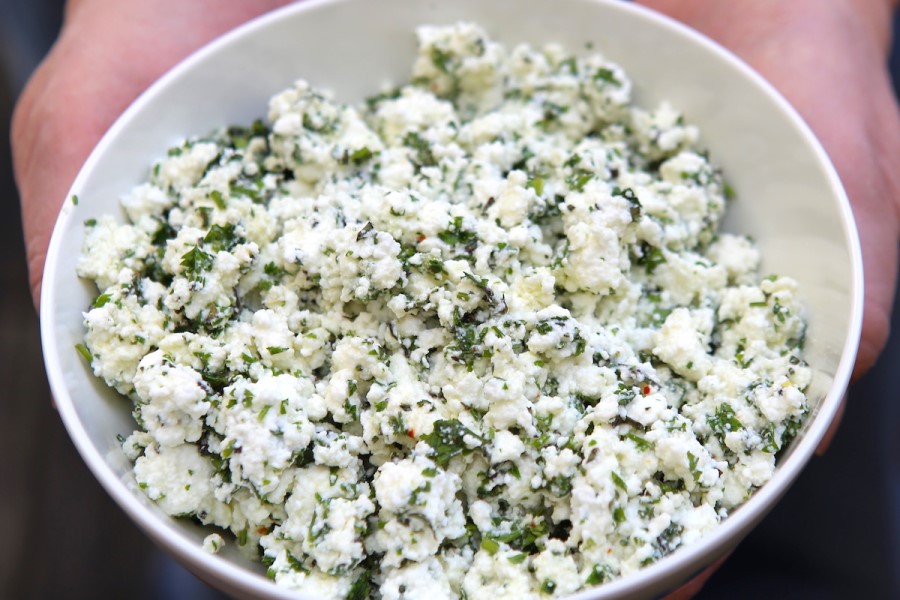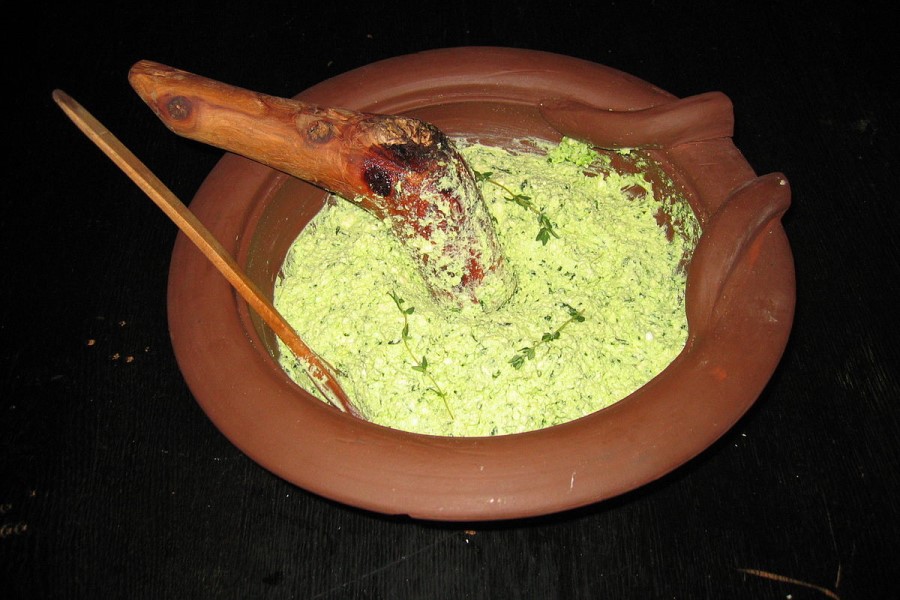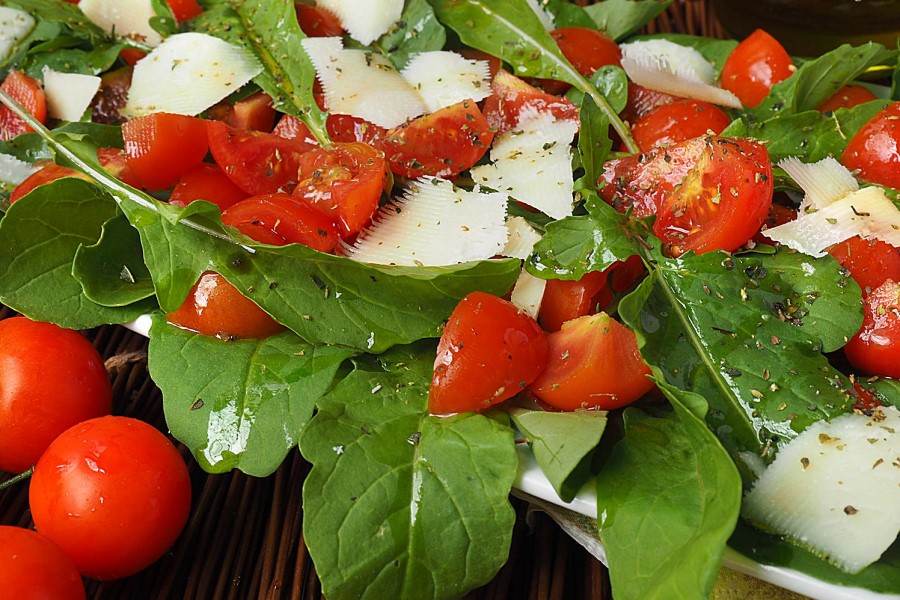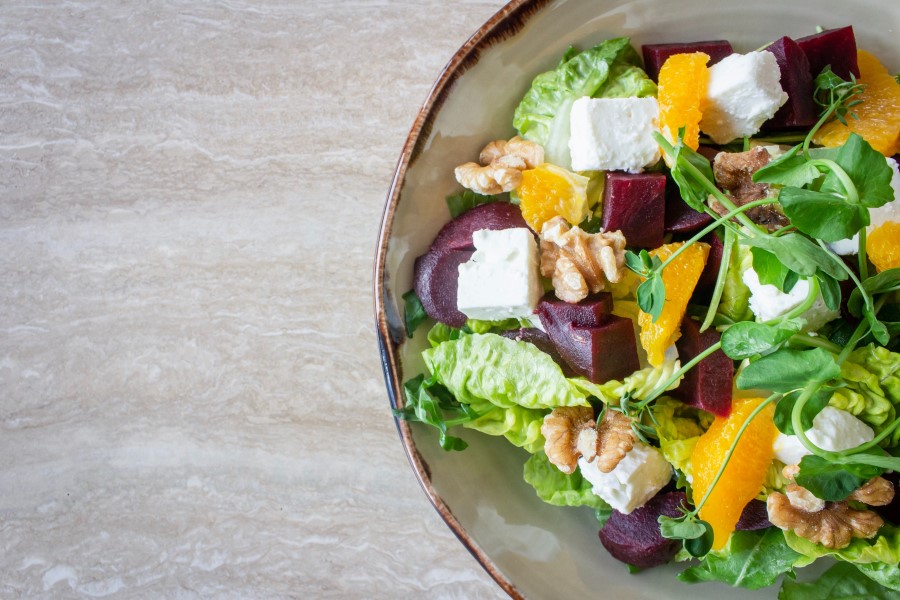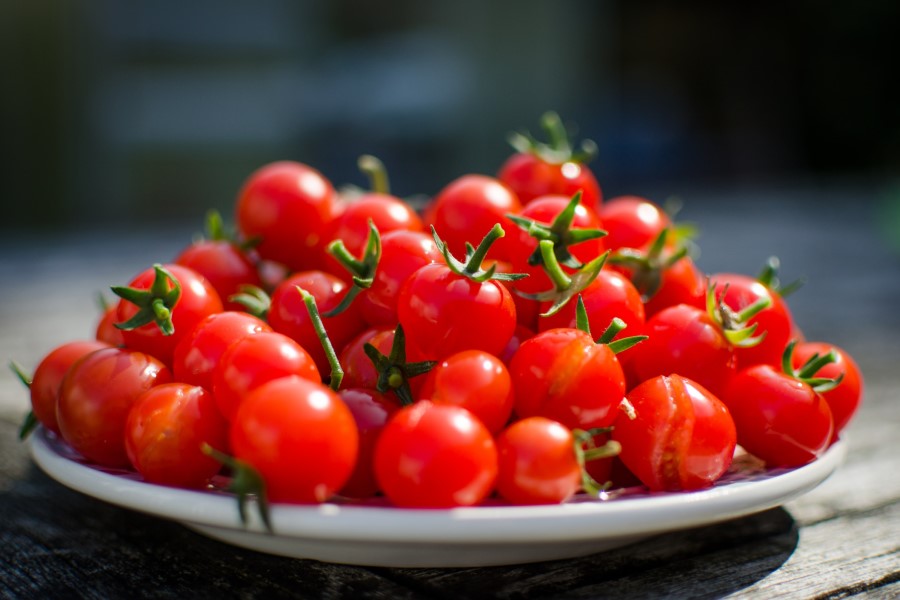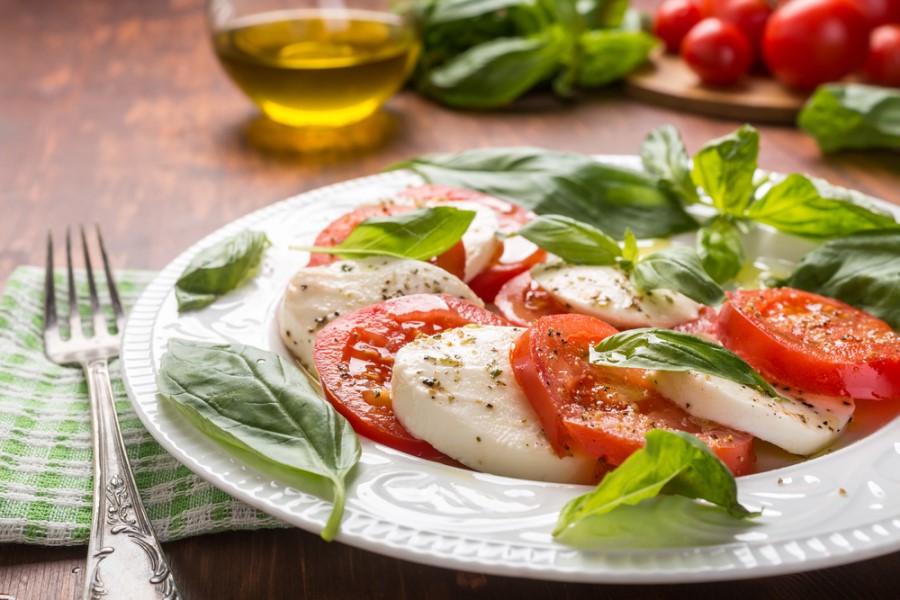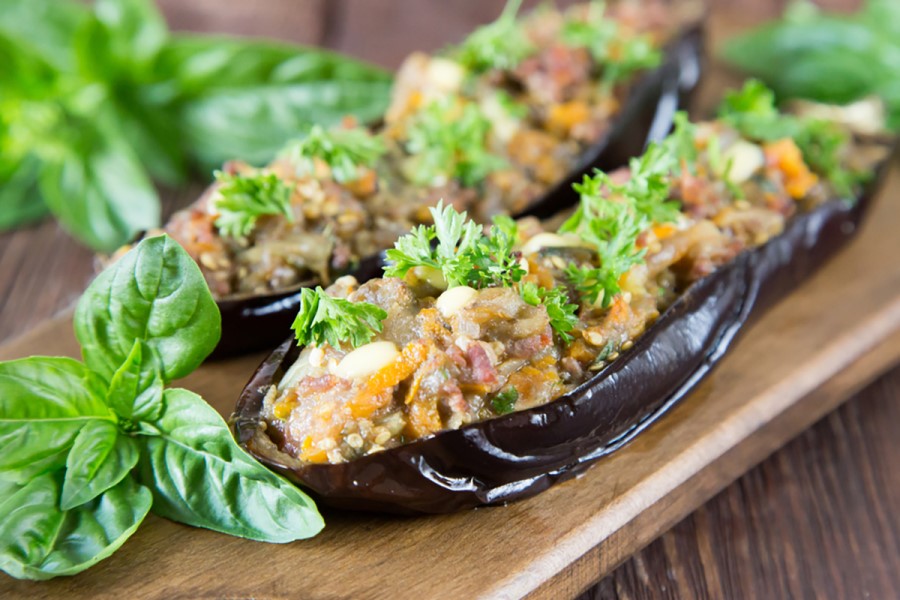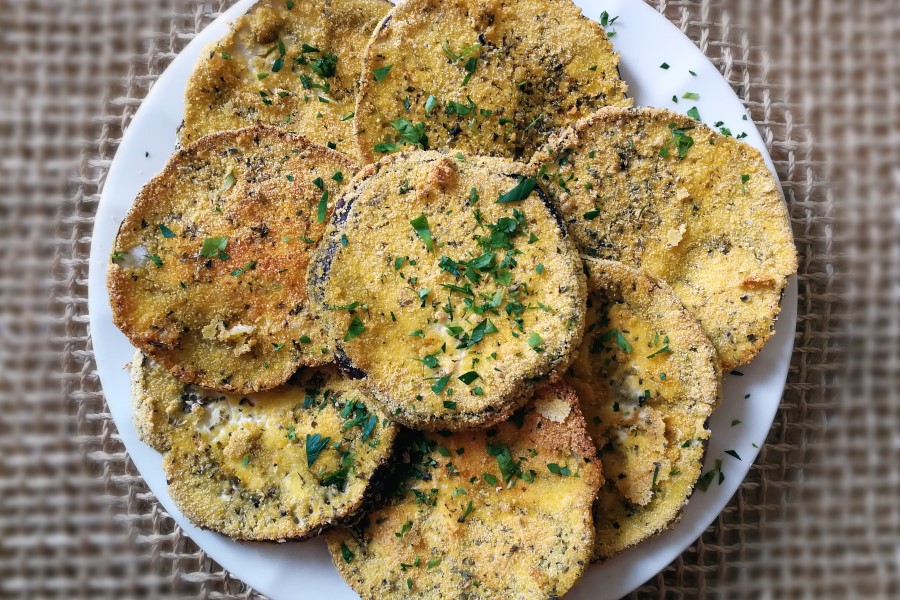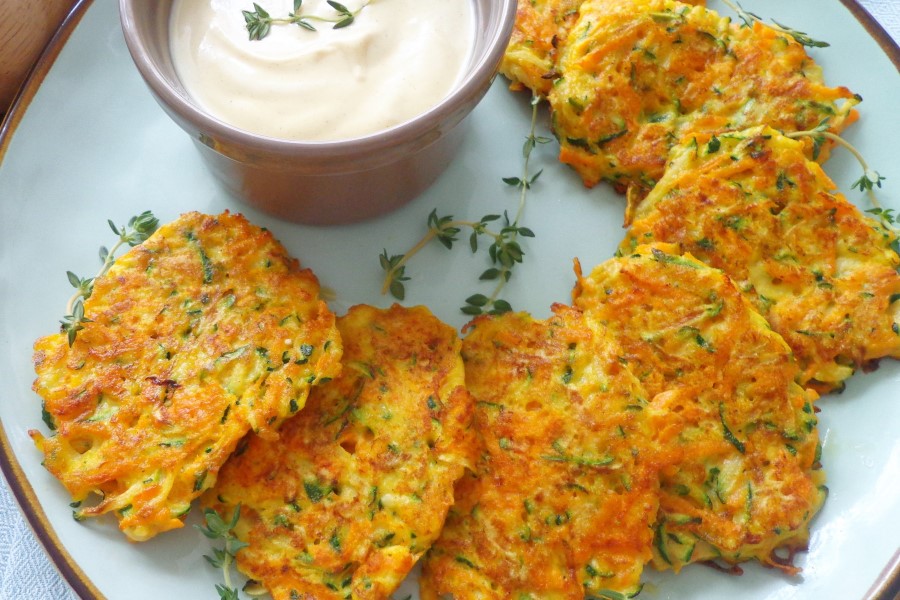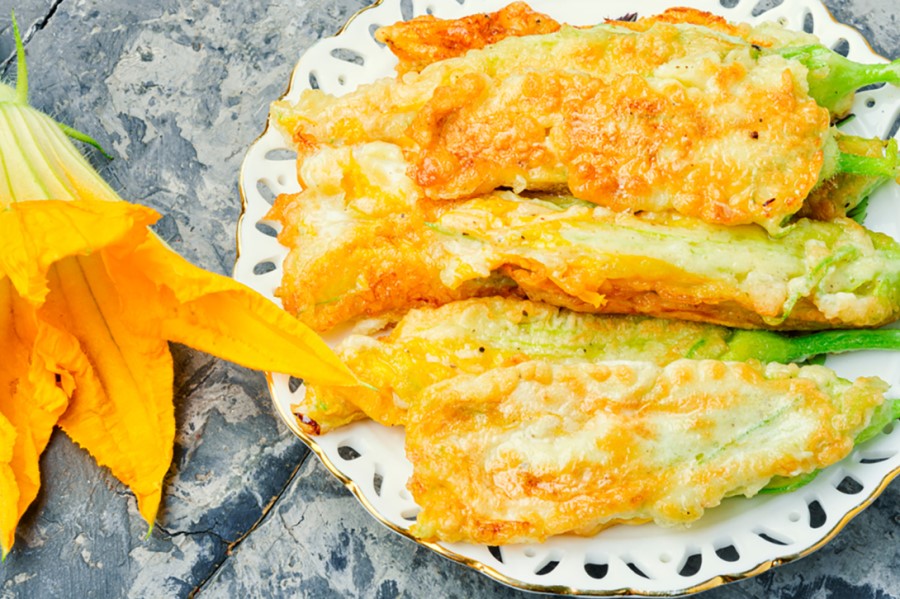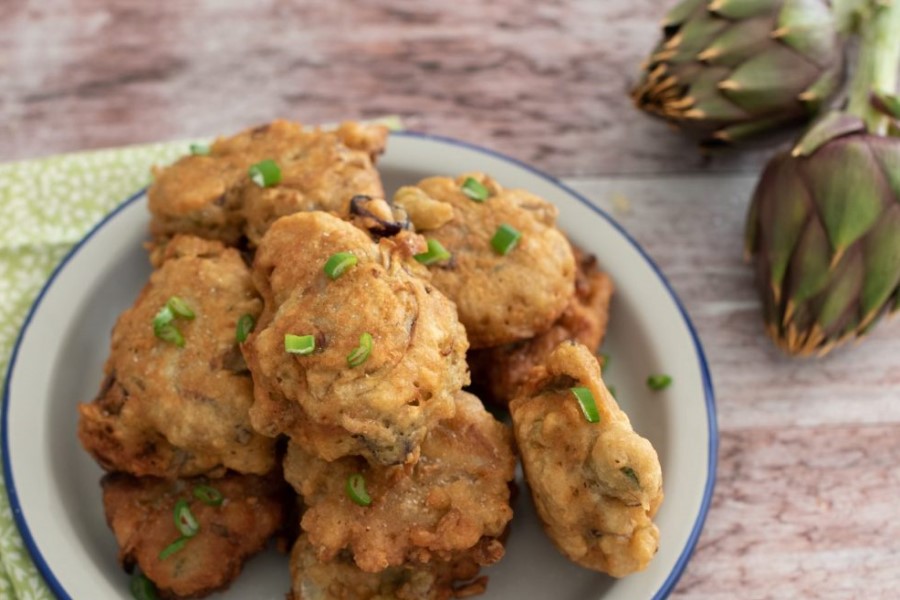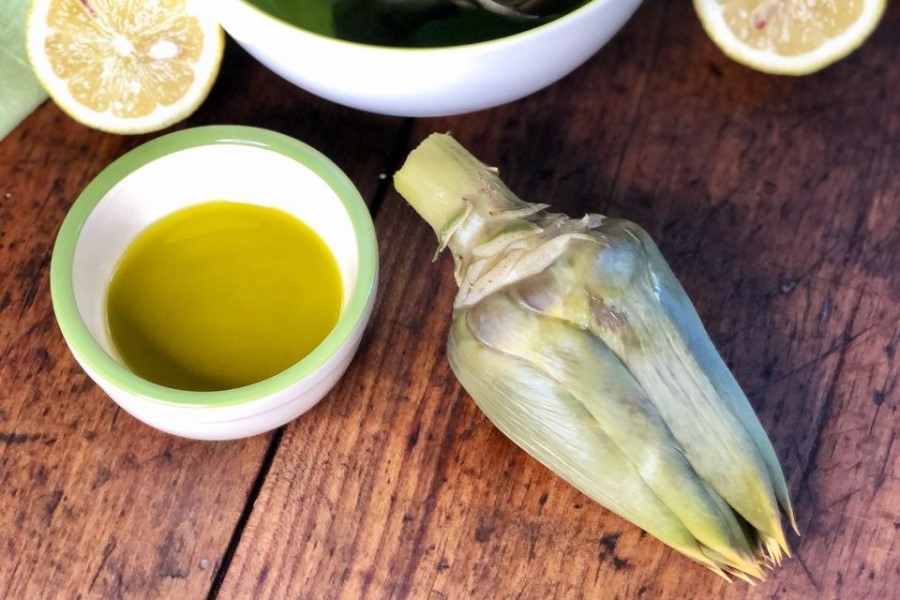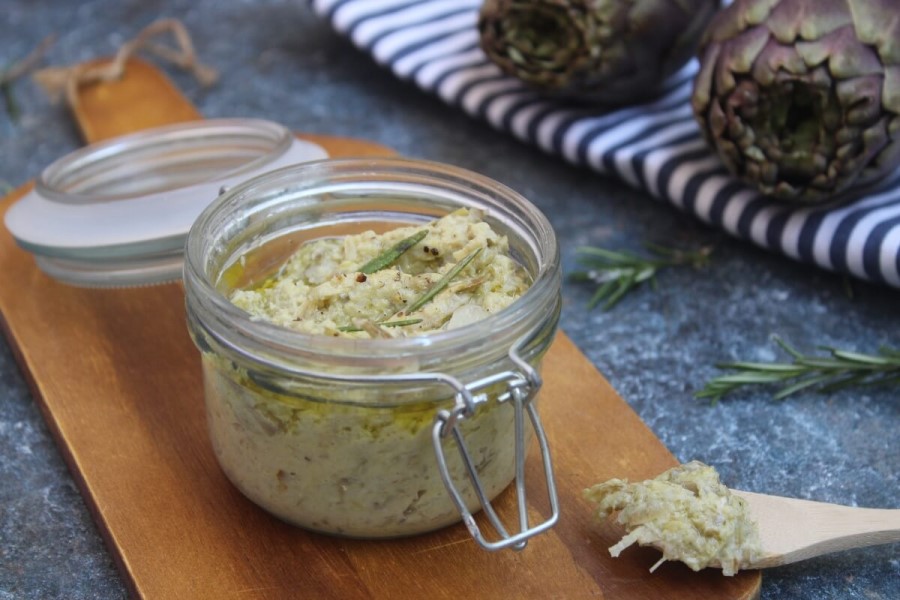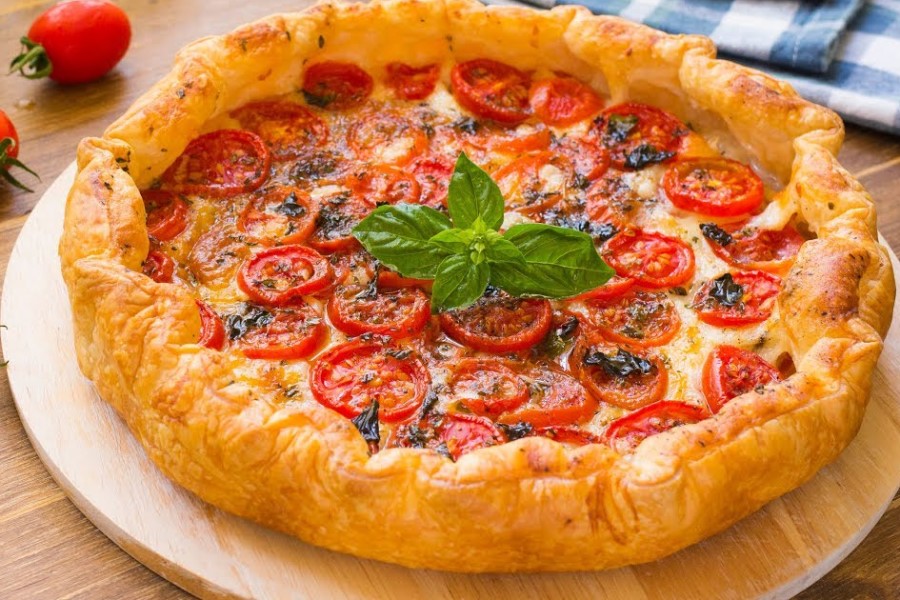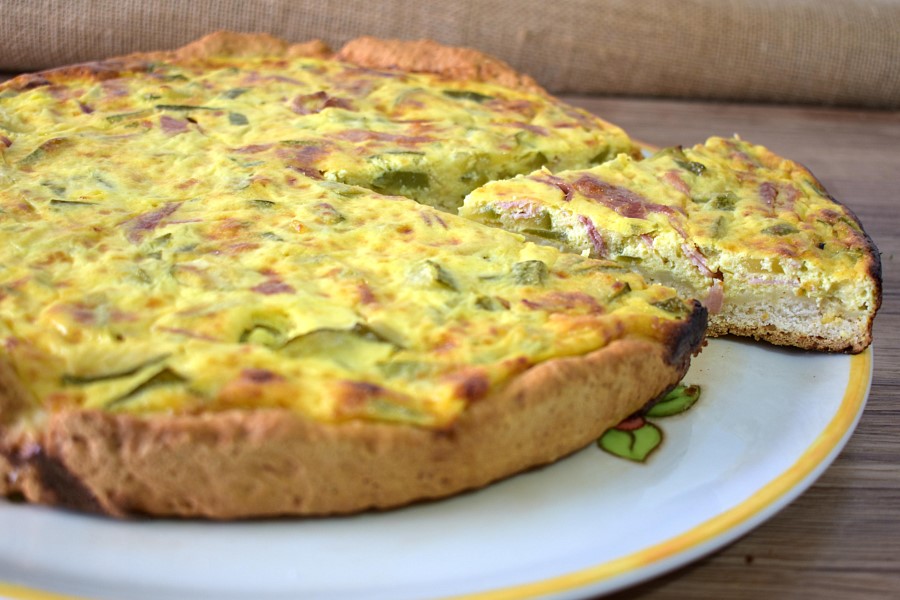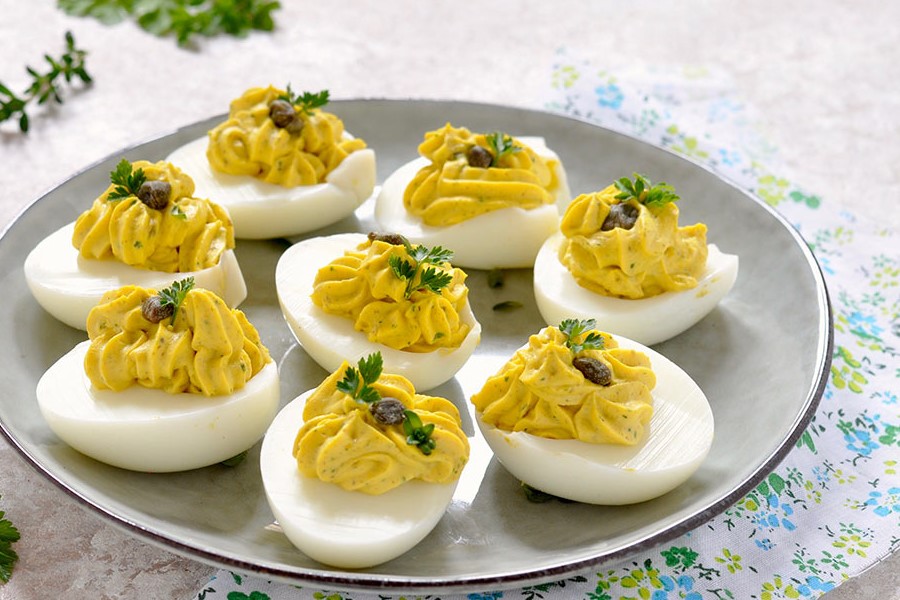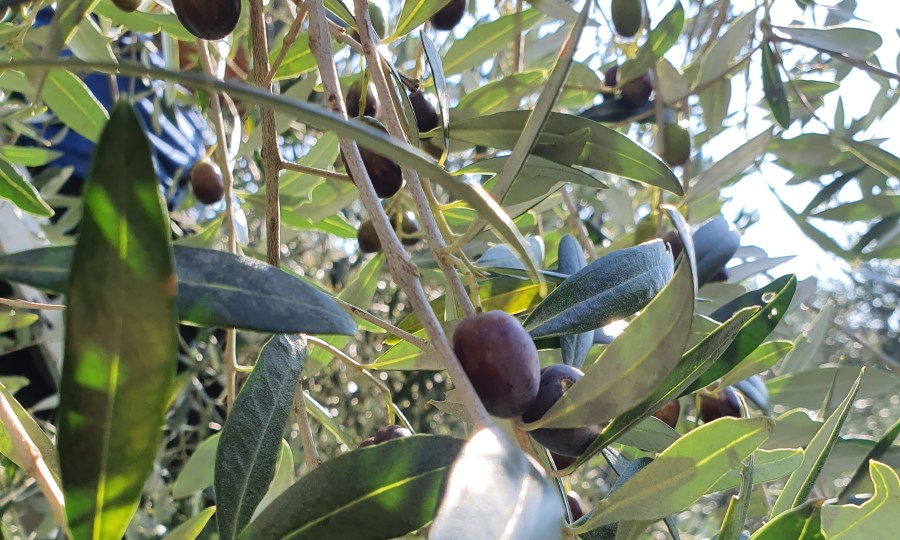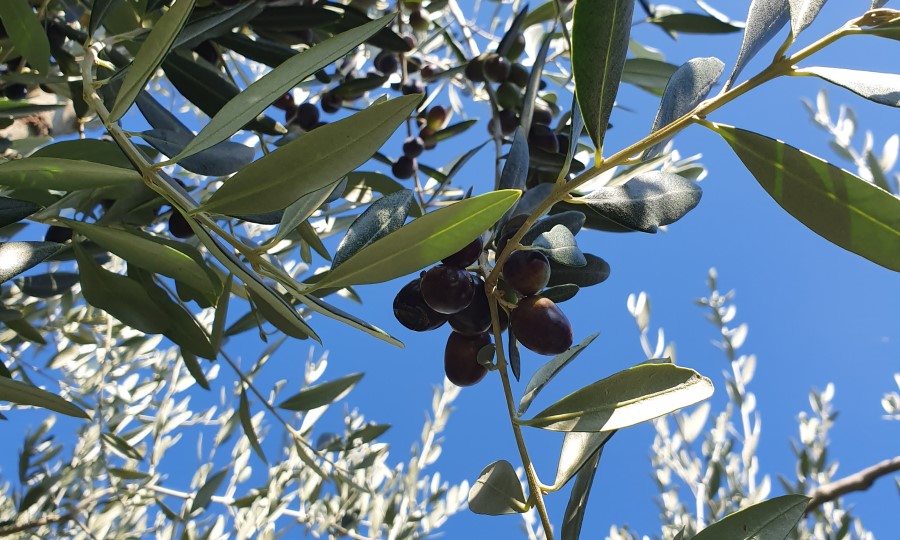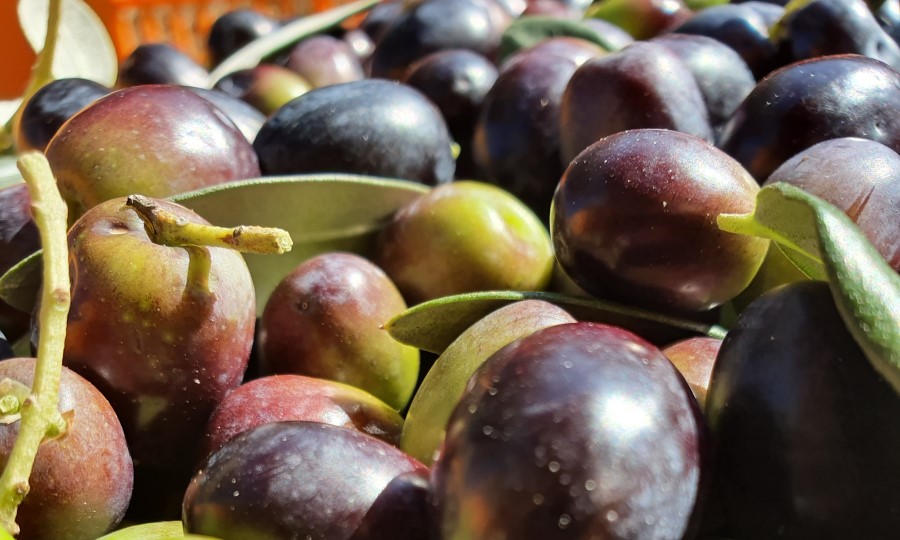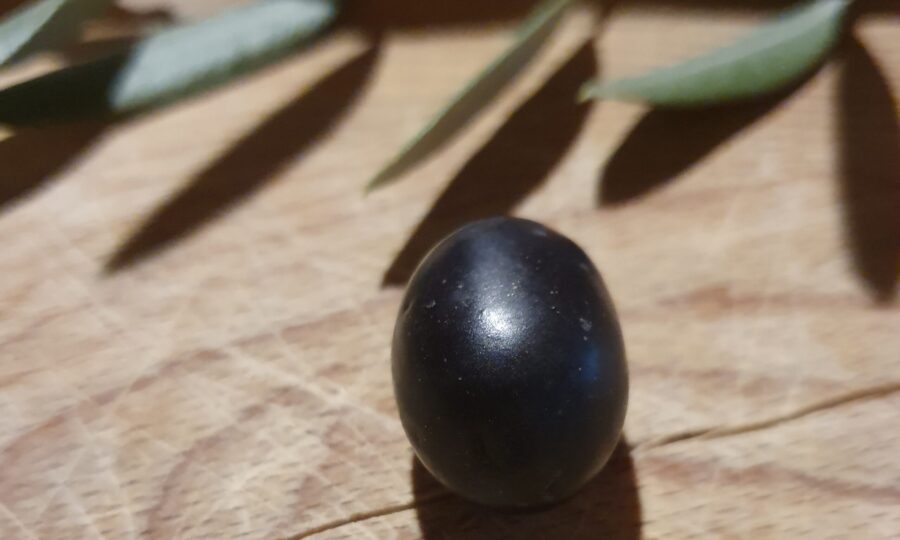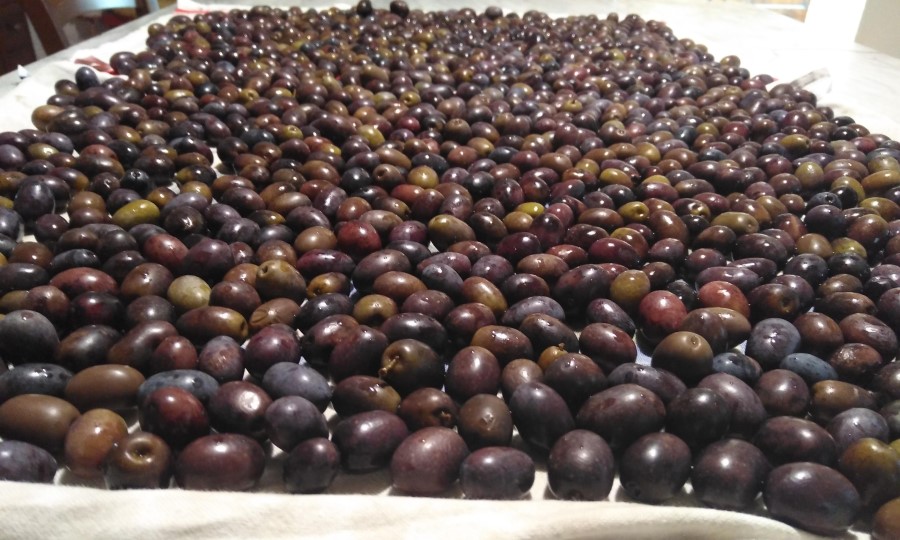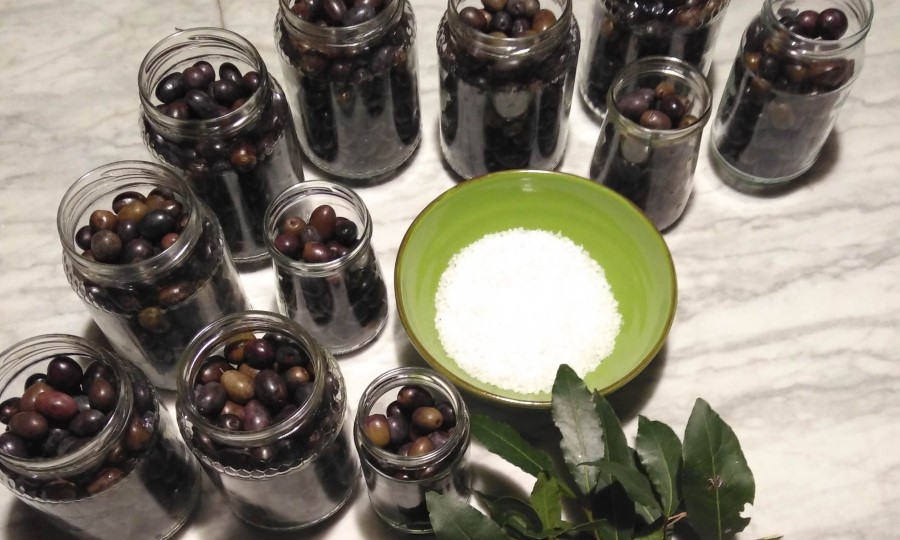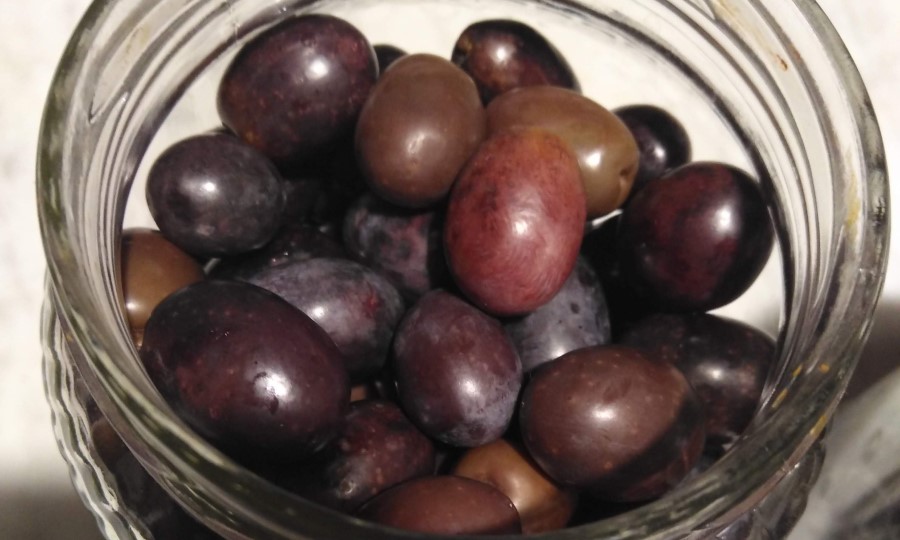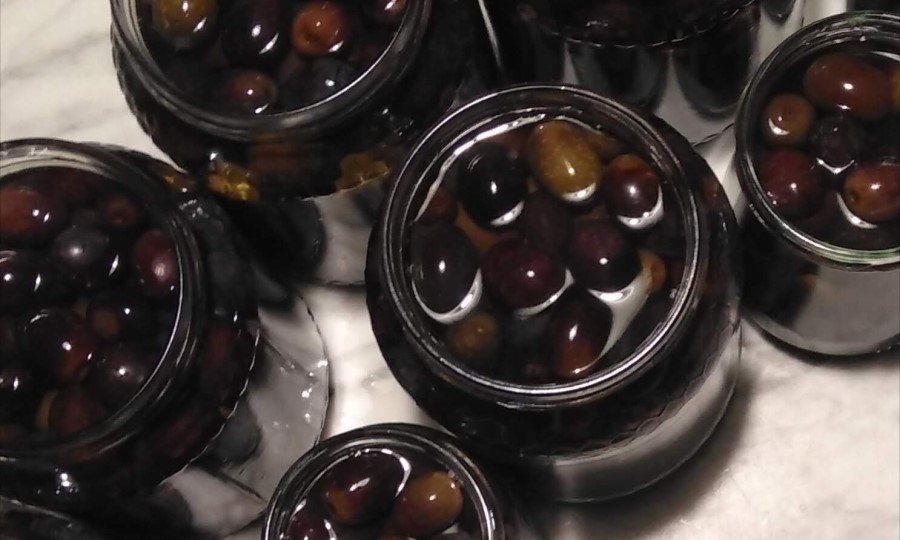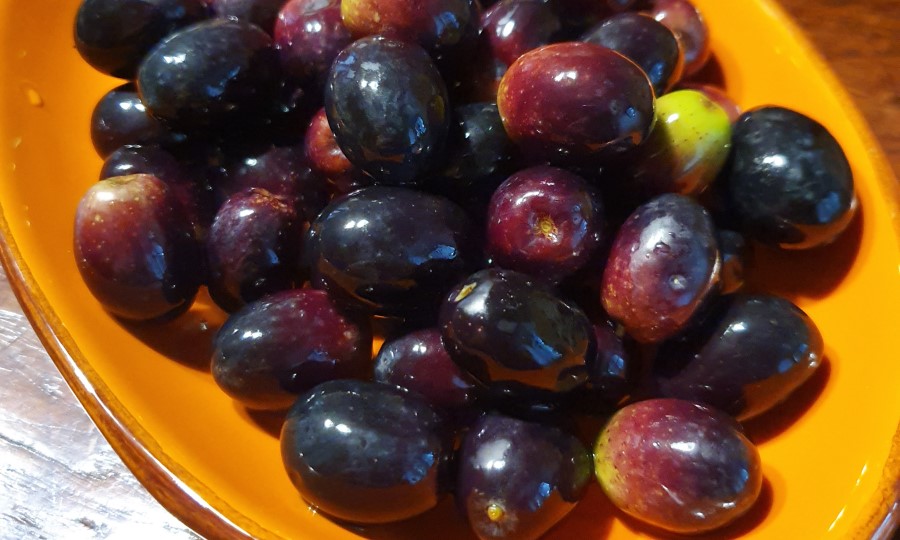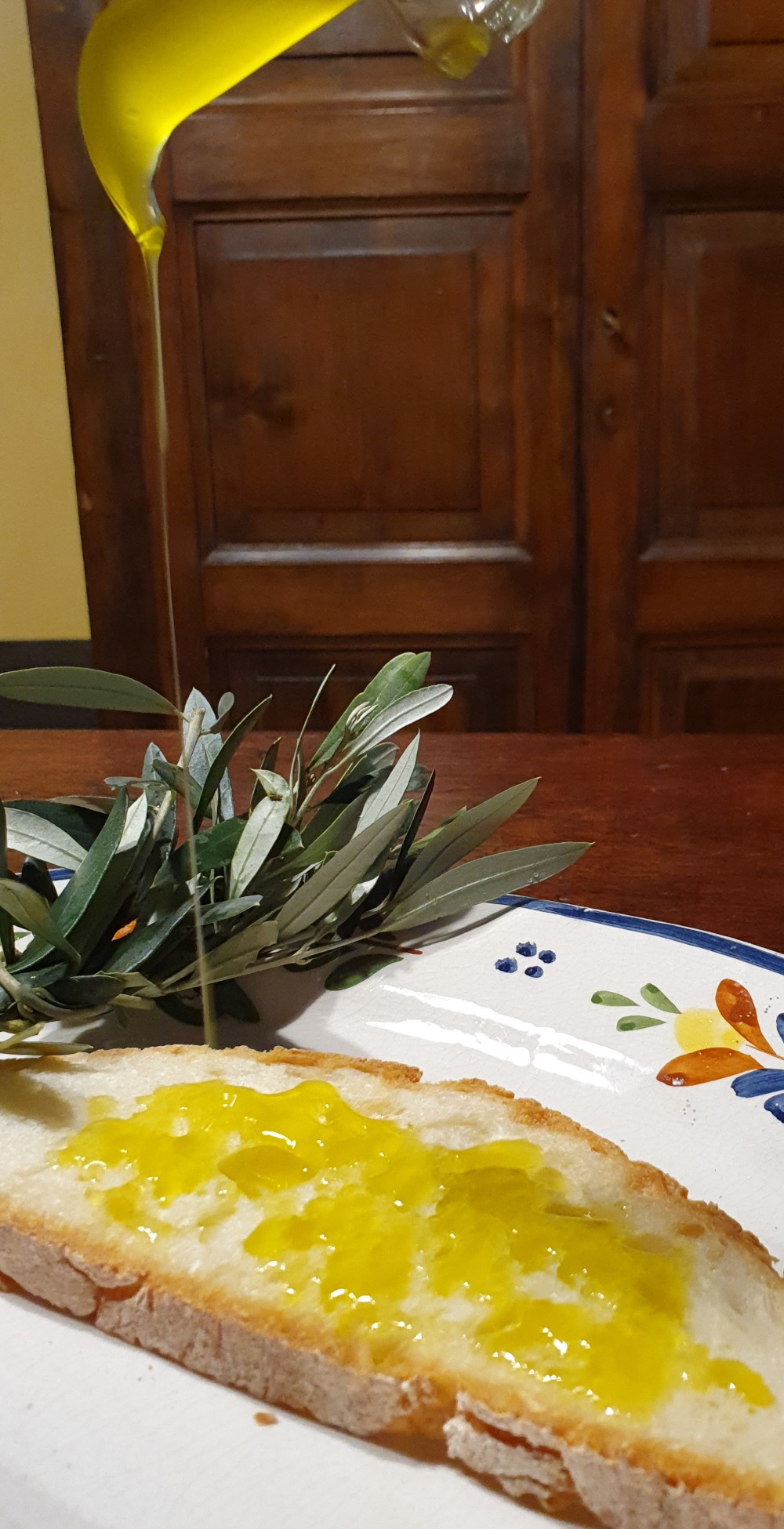
Eating in Tuscany / Italy: Starter
Eating in Italy often starts with the small antipasti. There are hundreds of them. Probably the most typical for Tuscany is the bruschetta. This tradition dates back to a time when bread was not abundant on our tables. At that time, people aimed at finding tasteful ways to give stale bread a second life. The bruschetta, affectionately also known as fettunta, is the epitome of reduction to the essential. A slice of Tuscan bread is lightly toasted on wood embers and finely rubbed with fresh garlic to taste. Traditionalists of Tuscan cuisine will limit this to the crust of the bread. Then we sprinkle it with our exquisite organic extra virgin olive oil. Thats’it, the starter is ready. A unique culinary highlight is enjoying the fettunta in November, in front of the open fire, after returning home from the olive press. Because then the smell of fresh olives spreads throughout our holiday home and makes us forget the fatigue of the day.
A further development of this tradition in Tuscany is the crostini. Here, the crispy toasted bread is combined with small local specialties that match the mood and the season. There are no limits to the imagination when it comes to crostini recipes. When it’s warm, for example, we eat them with fresh tomatoes and basil. A more powerful combinations is crostini with fegatini, i.e. chicken liver pâté with thyme. In our restaurant we also serve them with salsiccia and fennel. In autumn instead, they taste wonderful with ceci, mushrooms and melted cheese.
Eating sausage specialities in Italy
An affettati platter is often served as starter. In Tuscany, this includes raw ham, tasty salami and dried meat. Likewise, the finocchiona, a delicious fresh salami, mildly enriched with fennel seeds. Furthermore, a great idea on warm days is eating prosciutto melone, or, even better, raw ham on the lovely green figs from our garden.
Anchovies, the ancient power bar for farmers
When the farmers in Tuscany had a snack in the morning after the first work in the fields, they usually resorted to acciughe col segato. These are anchovies marinated in olive oil with garlic and lots of fresh parsley. Durable, tasty, salty, rich in vitamins. True energy snacks for the field work. This specialty has made its way onto our tables as starter. Taste it, even without the toil of fieldwork.
Eating cheese specialities in Italy
In spring you should not miss having baccelli e pecorino, a seasonal speciality of Tuscany. This is a combination of raw fresh broad beans with sheep cheese. Of course, we take the pecorino from our neighbouring shepherd, according to personal preference, mild or spicy. Both go perfectly well also with fruity flavours. That’s why we serve it with local honey and our jams, too. The pecorino makes a perfect pair with our sweet fig jam, but just as well with the fruity apricot jam or the traditional grape jam. Furthermore, don’t forget to try our shepherd’s a delicious fresh sheep milk ricotta.
The “national” starter in Italy is the trio tomato-mozzarella-basil. This is due to its three colours, green-white-red, that are the colours of Italy’s flag. According to legend, this dish was created on Capri Island during the founding period of the Italian Republic. It is therefore called Caprese.
Eating vegetarian in Italy
Vegetarian dishes have a firm place among the antipasti of Tuscany. Small salads with aromatic cocktail tomatoes in summer and beetroot in autumn, bring freshness to Tuscan meals. As well as seasonal vegetables, raw, grilled, stuffed, or fried. Zucchini blossoms and artichokes, deep-fried in pastella, a crispy batter, are very popular in Tuscany. From March onwards, the menu includes carciofi in pinzimonio. These are raw or blanched artichoke leaves, dipped in olive oil and seasoned with salt, pepper and lemon. Outside of the artichoke season, alternatively other raw vegetables are served in pinzimonio.
Starters based on eggs
On a farm with fresh eggs from happy chickens, like the Agriturismo Podere, starters obviously include stuffed eggs. They are served with a homemade mayonnaise enriched with tuna, capers or anchovies. Likewise, frittatas of every kind, with zucchini, tomatoes, red onions or, in autumn, with chanterelles that we collect in our forest.
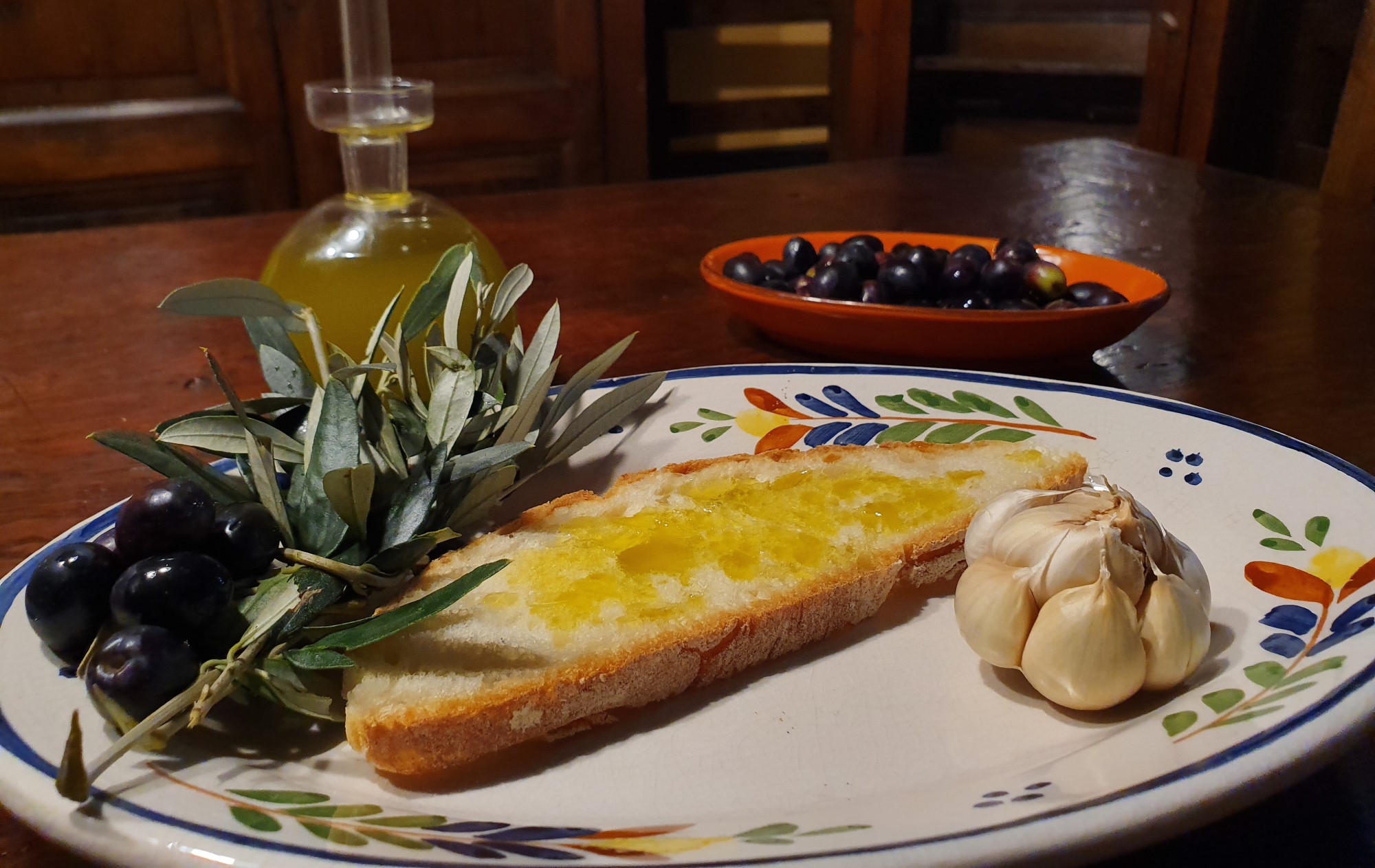
Eating in Tuscany / Italy: Starter
The Bruschetta
Eating in Italy often starts with the small antipasti. There are hundreds of them. Probably the most typical for Tuscany is the bruschetta. This tradition dates back to a time when bread was not abundant on our tables. At that time, people aimed at finding tasteful ways to give stale bread a second life. The bruschetta, affectionately also known as fettunta, is the epitome of reduction to the essential. A slice of Tuscan bread is lightly toasted on wood embers and finely rubbed with fresh garlic to taste. Traditionalists of Tuscan cuisine will limit this to the crust of the bread. Then we sprinkle it with our exquisite organic extra virgin olive oil. Thats’it, the starter is ready. A unique culinary highlight is enjoying the fettunta in November, in front of the open fire, after returning home from the olive press. Because then the smell of fresh olives spreads throughout our holiday home and makes us forget the fatigue of the day.
A further development of this tradition in Tuscany is the crostini. Here, the crispy toasted bread is combined with small local specialties that match the mood and the season. There are no limits to the imagination when it comes to crostini recipes. When it’s warm, for example, we eat them with fresh tomatoes and basil. A more powerful combinations is crostini with fegatini, i.e. chicken liver pâté with thyme. In our restaurant we also serve them with salsiccia and fennel. In autumn instead, they taste wonderful with ceci, mushrooms and melted cheese.
Eating sausage specialities in Italy
An affettati platter is often served as starter. In Tuscany, this includes raw ham, tasty salami and dried meat. Likewise, the finocchiona, a delicious fresh salami, mildly enriched with fennel seeds. Furthermore, a great idea on warm days is eating prosciutto melone, or, even better, raw ham on the lovely green figs from our garden.
Anchovies, the ancient power bar for farmers
When the farmers in Tuscany had a snack in the morning after the first work in the fields, they usually resorted to acciughe col segato. These are anchovies marinated in olive oil with garlic and lots of fresh parsley. Durable, tasty, salty, rich in vitamins. True energy snacks for the field work. This specialty has made its way onto our tables as starter. Taste it, even without the toil of fieldwork.
Eating cheese specialities in Italy
In spring you should not miss having baccelli e pecorino, a seasonal speciality of Tuscany. This is a combination of raw fresh broad beans with sheep cheese. Of course, we take the pecorino from our neighbouring shepherd, according to personal preference, mild or spicy. Both go perfectly well also with fruity flavours. That’s why we serve it with local honey and our jams, too. The pecorino makes a perfect pair with our sweet fig jam, but just as well with the fruity apricot jam or the traditional grape jam. Furthermore, don’t forget to try our shepherd’s a delicious fresh sheep milk ricotta.
The “national” starter in Italy is the trio tomato-mozzarella-basil. This is due to its three colours, green-white-red, that are the colours of Italy’s flag. According to legend, this dish was created on Capri Island during the founding period of the Italian Republic. It is therefore called Caprese.
Eating vegetarian in Italy
Vegetarian dishes have a firm place among the antipasti of Tuscany. Small salads with aromatic cocktail tomatoes in summer and beetroot in autumn, bring freshness to Tuscan meals. As well as seasonal vegetables, raw, grilled, stuffed, or fried. Zucchini blossoms and artichokes, deep-fried in pastella, a crispy batter, are very popular in Tuscany. From March onwards, the menu includes carciofi in pinzimonio. These are raw or blanched artichoke leaves, dipped in olive oil and seasoned with salt, pepper and lemon. Outside of the artichoke season, alternatively other raw vegetables are served in pinzimonio.
Starters based on eggs
On a farm with fresh eggs from happy chickens, like the Agriturismo Podere, starters obviously include stuffed eggs. They are served with a homemade mayonnaise enriched with tuna, capers or anchovies. Likewise, frittatas of every kind, with zucchini, tomatoes, red onions or, in autumn, with chanterelles that we collect in our forest.
- Our olives, starter & more -
The small olives in Tuscany are classic oil fruits and cannot be compared with the large edible olives. Initially, plucked directly from the tree, they are not suitable for eating. First, they have to be prepared in a month-long procedure. To begin with, from our harvest we select those olives with the most pulp. Also, we look for those most uniformly dark coloured. As a matter of fact, in nature they are not evenly black in colour like the olives in the supermarket. The latter ones are artificially blackened. Because they get their uniform black colour from the addition of ferrous gluconate, as indicated on the list of ingredients. We however, following Grandma’s instructions to the letter, put our olives to rest in alternating saltwater solutions of varying concentrations for specific periods of time. Only after some months they are filled into the jar as olive in salamoia.
Our olives have a very intense taste and are a delicacy for true olive lovers. In Tuscany we like to eat them with antipasti because they are appetizing. In starter recipes, they go wonderfully with tomato sauces, for example in the puttanesca. Similarly, the preparation of Italian in umido stews also includes a generous addition of olives. We will be happy to introduce you to olives during our themed dinner dedicated to olives and olive oil. Then you’ll learn about the many uses of this gorgeous fruit and round off the evening with a grappa alle olive.



